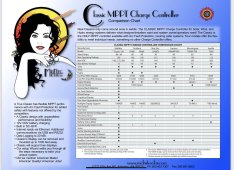Bluedog225
Texas
- Joined
- Nov 18, 2019
- Messages
- 2,917
I almost put this in the beginner’s corner. But it’s a little not beginnery.
I’m looking at the spec sheet for the Midnite Solar Classic. Trying it on for size.
My understanding of the need for communication between the battery management system and the MPPT controller is pretty basic. But I’ve reluctantly come to the conclusion that there are some charging benefits/nuances that are better handled by communications rather than voltage.
Looking at a Tier 1 product like the Classic, how can I tell if it is compatable with, for example, the Overkill BMS? I don’t see anything on the Midnite site or the Overkill site that says they both speak the same lingo (whatever that is).
BMS/MPPT communications eludes me. Is this something I have to run through a computer?
Should I be looking at other brands that handle this better?
Any thoughts appreciated.
I’m looking at the spec sheet for the Midnite Solar Classic. Trying it on for size.
My understanding of the need for communication between the battery management system and the MPPT controller is pretty basic. But I’ve reluctantly come to the conclusion that there are some charging benefits/nuances that are better handled by communications rather than voltage.
Looking at a Tier 1 product like the Classic, how can I tell if it is compatable with, for example, the Overkill BMS? I don’t see anything on the Midnite site or the Overkill site that says they both speak the same lingo (whatever that is).
BMS/MPPT communications eludes me. Is this something I have to run through a computer?
Should I be looking at other brands that handle this better?
Any thoughts appreciated.



